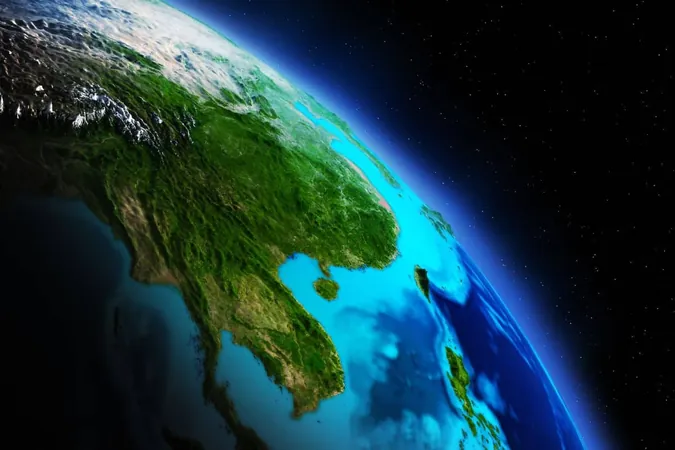
Were Earth’s First Continents Forged in Cosmic Turmoil? Groundbreaking Study Reveals Surprising Insights!
2025-04-06
Author: John Tan
The Hidden Signs of Early Continents
This pivotal research, spearheaded by Professor Emeritus Simon Turner from Macquarie University, suggests that the planet’s initial solid surface, known as the protocrust, bore the same chemical characteristics detected in current continental crust. Through sophisticated simulations mimicking the extreme temperatures and molten conditions of early Earth—characterized by a global magma ocean—the research team has painted a clearer picture of early crust formation.
“Historically, scientists believed that tectonic plates had to dive beneath each other to create the specific chemical fingerprints observed in continental areas,” notes Turner. “Our findings suggest that these fingerprints were present in Earth’s protocrust right from the beginning, compelling a reevaluation of existing theories.”
The Enigmatic Niobium Anomaly
One particularly intriguing insight from the study concerns niobium, a metallic element whose apparent scarcity in continental rocks has long been thought to point towards subduction zones—regions where tectonic plates overlap. It was believed that contrasting niobium concentrations could help trace the origins of plate tectonics.
However, Turner and his team posed a challenge to this conventional interpretation. By modeling Earth’s interior during the Hadean eon, they found that niobium naturally segregated into the core due to its siderophilic nature under reducing conditions. This phenomenon would occur independently of subduction processes, potentially clarifying why niobium concentrations are characteristically low in nearly all continental rocks, regardless of their geological age.
How Meteorite Bombardment Shaped the Early Crust
Despite the absence of tectonic activity, the early Earth’s crust was far from static. Researchers propose that a blend of meteorite impacts, crustal peeling, and early plate motion enriched the crust in silica and gave rise to thicker continental fragments. “Our study illustrates that the chemical signatures found in continental rocks formed during Earth’s earliest periods, irrespective of the surface dynamics at play,” emphasizes Turner.
Around 3.8 billion years ago, as impacts from space diminished, the groundwork for self-sustaining plate tectonics began to take shape. Intermittent subduction-like activity, instigated by extraterrestrial collisions, paved the way for the complex geological processes we observe today.
A New Paradigm in Planetary Geology
Turner believes this revolutionary framework could not only transform our understanding of Earth’s geological history but also guide researchers studying similar processes on other rocky planets throughout the universe. “This discovery significantly alters our perspective on Earth’s formative years and presents new possibilities for how continents may form on distant, rocky planets,” he asserts.
The implications of this groundbreaking study extend far beyond Earth. As scientists explore other celestial bodies, they may discover that the formation of continents is a universal phenomenon, intricately connected to cosmic chaos and perhaps even the conditions found across different planetary systems.
This eye-opening research not only challenges the existing theories about Earth’s geological origins but also paves the way for a new understanding of planetary evolution on a cosmic scale, igniting excitement in the scientific community about what lies beyond Earth!




 Brasil (PT)
Brasil (PT)
 Canada (EN)
Canada (EN)
 Chile (ES)
Chile (ES)
 Česko (CS)
Česko (CS)
 대한민국 (KO)
대한민국 (KO)
 España (ES)
España (ES)
 France (FR)
France (FR)
 Hong Kong (EN)
Hong Kong (EN)
 Italia (IT)
Italia (IT)
 日本 (JA)
日本 (JA)
 Magyarország (HU)
Magyarország (HU)
 Norge (NO)
Norge (NO)
 Polska (PL)
Polska (PL)
 Schweiz (DE)
Schweiz (DE)
 Singapore (EN)
Singapore (EN)
 Sverige (SV)
Sverige (SV)
 Suomi (FI)
Suomi (FI)
 Türkiye (TR)
Türkiye (TR)
 الإمارات العربية المتحدة (AR)
الإمارات العربية المتحدة (AR)